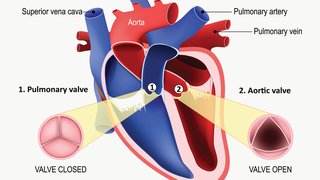
In 2016, North Texas experienced a greater shortage of blood platelets than in years past, despite increased efficiencies in how medical centers use donations.
Cancer patients undergoing chemotherapy, trauma victims, and patients whose conditions require routine transfusions in North Texas and Southern Oklahoma rely on blood and platelet donations from Carter BloodCare as part of their treatment. Platelets help the blood to clot, which helps prevent excessive bleeding in the event of an injury.
Please take a couple of minutes to learn what has caused a shortage of blood platelets, how we use blood donations to help patients, and how you can help.
Why is there a shortage of blood platelets?
Hospitals and medical centers are always in need of donated blood. But a number of factors have made the need for blood platelets especially urgent.
One reason the supply of blood platelets has decreased is that we now have additional required testing of platelets after donation. A rare but serious complication called transfusion-related acute lung injury (TRALI) has been the leading cause of death due to transfusions. These requirements reduce the risk of TRALI, which is important, but unfortunately the process shrinks the supply of blood platelets available for transfusions.
Another reason for the decline in platelets is simply a consequence of modern medicine. Most transfusion recipients today require much less blood than they’ve been given in the past. Research has shown that smaller amounts of red blood cells are effective in treating patients versus larger-volume transfusions, with a lower risk of complications. Though this means we’re more efficient at transfusing patients, it also means the demand for red blood cells declines. As that demand decreases, there’s less of a public push for blood donations, and donations tend to decrease. With less donated blood from which we extract platelets, there’s consequently a drop in our platelet supply.
How are blood donations used?
After a donor’s blood has been collected, it’s often separated into its components: red blood cells, white blood cells, plasma, and platelets. Each component plays a vital role in helping people heal from trauma and recover from medical procedures.
Separating blood into its components allows us to use donations more efficiently and help the greatest number of people. Red blood cells, for example, are used in blood transfusions when people lose a lot of blood due to an accident or surgery.
Chemotherapy medications often reduce platelet counts in cancer patients, which puts them at high risk for excessive bleeding. For people undergoing chemotherapy, a minor cut can become a medical emergency. Low platelet counts also can cause bruising, bleeding from the gums and nose, and in severe cases even internal bleeding. Most blood platelet donations go to cancer patients to counter such reactions.
Red blood cells can be stored for about a month before being given to someone in a transfusion. Blood platelets, on the other hand, have a shelf life of only five days. According to the American Red Cross, someone in the U.S. needs blood platelets every 30 seconds. That means we constantly need new blood platelet donations.

How is donating blood platelets different from whole blood?
Donating “whole blood,” or the standard process of drawing a pint of blood from a donor, supplies all the components of blood that we use to treat patients. This process takes about an hour for most donors. But donors can choose to give just one of these components, including blood platelets.
During platelet donation – through a process called platelet apheresis – the donor is connected to a machine that draws blood, removes some platelets and a small amount of plasma, and cycles most of that blood back into the body. A standard platelet apheresis procedure usually takes about two hours – twice as long as whole blood donation, though the duration can vary. The advantage is that we can safely draw more platelets with this method than from a standard whole-blood donation. In fact, the number of platelets from one donor can meet the transfusion needs of as many as three people by using this process, whereas it takes four to six whole-blood donations to provide enough platelets to meet the needs of one patient.
Platelet recipients, such as those undergoing cancer treatment or organ transplants, have better immune tolerance for transfusions from one donor than from multiple donors. When the body is repeatedly introduced to antigens, or foreign substances that trigger an immune system response, it can develop antibodies to attack these foreign invaders on sight. If someone is receiving platelets from multiple donors, that person’s body is more likely to create antibodies and destroy the donor platelets. This is why platelet apheresis is the preferred method of platelet donation.
Who can donate platelets, and how often?
As with whole-blood donations, there are requirements for who can donate platelets. These requirements vary depending on the blood center, but many people are eligible for both types of donation. Carter BloodCare requires that donors weigh at least 110 pounds, and a staff member will check donors’ temperature, blood pressure, pulse, and blood count.
We recommend that people with certain blood types, such as Type O negative (the universal donor) and B negative (a rare blood type), make whole-blood donations to meet the ever-present demand for these blood types. People who have lived or recently traveled outside the U.S. may be unable to donate blood for a period of time, as well as those who regularly take aspirin products.
Unlike whole blood, you can donate platelets often. According to the 2016 American Red Cross guidelines, platelets can be donated every seven days, up to 24 times per year. However, if you donate both whole blood and platelets, you may need to wait longer between donations.
You need to schedule a platelet donation ahead of time, which can be tricky with a busy schedule. If you can’t find two hours for a platelet donation, please consider donating whole blood instead. I can’t emphasize this enough: Your contribution can save lives.
To donate your blood or platelets, please contact a local blood center such as Carter BloodCare. Your donation will save lives in your community.










